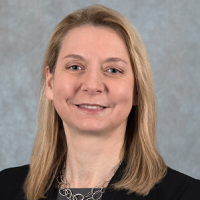

This summer, the U.S. Food and Drug Administration announced plans to establish the Rare Disease Innovation Hub (the Hub), and today, we are excited to share more about our progress. The Hub is an FDA cross-center program that will act as the single point of engagement and connection with outside parties for drug and biological product development and as a forum for the Center for Biologics Evaluation and Research (CBER) and the Center for Drug Evaluation and Research (CDER) to collaborate on cross-cutting rare disease-related issues. Through the Hub, we plan to foster a community at the FDA for open dialogue and knowledge sharing to identify new approaches to drug and biologic development and overcome hurdles that have traditionally impeded progress for rare disease treatments.
Gathering Feedback from the Rare Disease Community
Our first major step toward establishing the Hub was to gather feedback from our partners in the rare disease community. In collaboration with the Reagan-Udall Foundation for the FDA, we hosted a public meeting, Advancing Rare Disease Therapies Through an FDA Rare Disease Innovation Hub, on October 16, 2024. The meeting brought together rare disease patient advocates, academic researchers, regulated industry, and others to discuss how the Hub can best engage with members of the community and prioritize its work. There was also a public docket to capture feedback from those unable to speak during the public meeting.
We want to thank our partners in the rare disease community for participating in the meeting and contributing to the public docket. We heard you and will use your feedback to help inform the Hub’s priorities and initiatives.
New Director of Strategic Coalitions for the Hub
Another key step toward establishing the Hub was creating a new senior leadership position, the Director of Strategic Coalitions for the Hub. We are pleased to share that we have selected Amy Comstock Rick, J.D., to serve in this role. Ms. Rick will be accountable directly to both of us and will act as a single point of external engagement on behalf of the Hub on cross-cutting rare disease-related issues and will also drive the development of a comprehensive strategic agenda for the Hub.
Prior to joining the agency Ms. Rick served as principal consultant at Leavitt Partners advising clients and coalitions on health policy issues, with a primary focus on FDA-related issues. Before that, she served as President and Chief Executive Officer of the Food & Drug Law Institute. Ms. Rick holds a juris doctor from University of Michigan Law School and a bachelor’s degree from Bard College.
Ms. Rick brings to this new role more than 20 years of experience as a leader and trusted ally in advocating for policies throughout health care, biomedical research, and nonprofit communities, which includes extensive engagement with patient communities and government agencies on issues related to rare diseases. We are excited to have her join and begin creating the important partnerships needed to strengthen the Hub’s engagement throughout the rare disease community.
Organizational Structure of the Hub
The Hub represents a dynamic new model for cross-center collaboration at the agency. As the directors of CBER and CDER, we are jointly leading the Hub and will collaborate with other areas that touch rare diseases across the FDA, including with the Center for Devices and Radiological Health, the Oncology Center of Excellence, and the Office of Orphan Products Development. This includes establishing a Rare Disease Innovation Hub Steering Committee that will bring together these groups and the creation of a new CBER-CDER Rare Disease Policy and Portfolio Council. The council will bring together experts from the centers to consider scientific, regulatory science, and policy issues related to rare disease product development that are common to both centers, leveraging the CDER’s Accelerating Rare disease Cures (ARC) Program and CBER’s Rare Disease Program.
The collaborative model of the Hub will build upon the knowledge and skills of staff within their respective centers, promote adoption of best practices, and avoid confusion over decision-making authorities within those organizations. Meetings between the FDA and sponsors relating to specific drug or biological products will remain the same, as will the way decisions are made about specific programs and how advisory committee meetings are structured and run.
By working together, we believe that we can further facilitate the development, evaluation, and availability of safe and effective therapies. We are committed to ongoing and open communication and look forward to continuing this dialogue with the rare disease community. For more information, please visit FDA Rare Disease Innovation Hub.
This article was originally published on FDA Voices and is reprinted here with permission.
